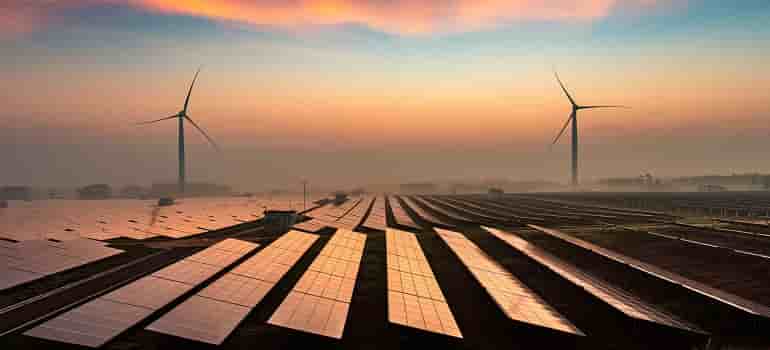
As Covid-19 hits the fossil fuel industry, a new UN report on Wednesday showed renewable energy is more cost-effective than ever — providing an opportunity to prioritise clean energy in economic recovery packages and bring the world closer to meeting the Paris Climate Agreement goals.
The ‘Global Trends in Renewable Energy Investment 2020’ report — from the UN Environment Programme (UNEP), the Frankfurt School-UNEP Collaborating Centre and BloombergNEF (BNEF) — analyses 2019 investment trends, and clean energy commitments made by countries and corporations for the next decade.
It finds commitments equivalent to 826 GW of new non-hydro renewable power capacity, at a likely cost of around $1 trillion, by 2030.
One GW is similar to the capacity of a nuclear reactor.
Getting on track to limiting global temperature rise to under two degrees Celsius — the main goal of the Paris Agreement — would require the addition of around 3,000 GW by 2030, the exact amount depending on the technology mix chosen.
The planned investments also fall far below the $2.7 trillion committed to renewables during the last decade.
However, the report shows that the cost of installing renewable energy has hit new lows, meaning future investments will deliver far more capacity.
Renewable energy capacity, excluding large hydro-electric dams of more than 50 MW, grew by 184 gigawatts (GW) in 2019.
This highest-ever annual addition was 20 GW, or 12 per cent, more than the new capacity commissioned in 2018.
Yet the dollar investment in 2019 was just one per cent higher than the previous year, at $282.2 billion.
The all-in, or levelised, cost of electricity continues to fall for wind and solar, thanks to technology improvements, economies of scale and fierce competition in auctions.
Costs for electricity from new solar photovoltaic plants in the second half of 2019 were 83 per cent lower than a decade earlier.
“The chorus of voices calling on governments to use their COVID-19 recovery packages to create sustainable economies is growing,” said Inger Andersen, Executive Director of UNEP.
“This research shows that renewable energy is one of the smartest, most cost-effective investments they can make in these packages.”
“If governments take advantage of the ever-falling price tag of renewables to put clean energy at the heart of COVID-19 economic recovery, they can take a big step towards a healthy natural world, which is the best insurance policy against global pandemics,” Andersen said.
Renewable energy has been eating away at fossil fuels’ dominant share of electricity generation over the last decade.
Nearly 78 per cent of the net new GW of generating capacity added globally in 2019 was in wind, solar, biomass and waste, geothermal and small hydro.
Investment in renewables, excluding large hydro, was more than three times that in new fossil fuel plants.
“Renewables such as wind and solar power already account for almost 80 per cent of newly built capacity for electricity generation,” said Svenja Schulze, Minister of the Environment, Nature Conservation and Nuclear Safety, Germany.
“Investors and markets are convinced of their reliability and competitiveness”.
Nils Stieglitz, President of Frankfurt School of Finance & Management, said: “We see the energy transition is in full swing, with the highest capacity of renewables financed ever. Meanwhile, the fossil fuel sector has been hit hard by the COVID-19 crisis — with demand for coal and gas-fired electricity down in many countries, and oil prices slumping.”
The 2019 investment brought the share of renewables, excluding large hydro, in global generation to 13.4 per cent, up from 12.4 per cent in 2018 and 5.9 per cent in 2009.
This means that in 2019, renewable power plants prevented the emission of an estimated 2.1 gigatonnes of carbon dioxide, a substantial saving given global power sector emissions of approximately 13.5 gigatonnes in 2019.
Source: IANS
